Special Report
20 Irish Foods Explained Just in Time for St. Patrick’s Day
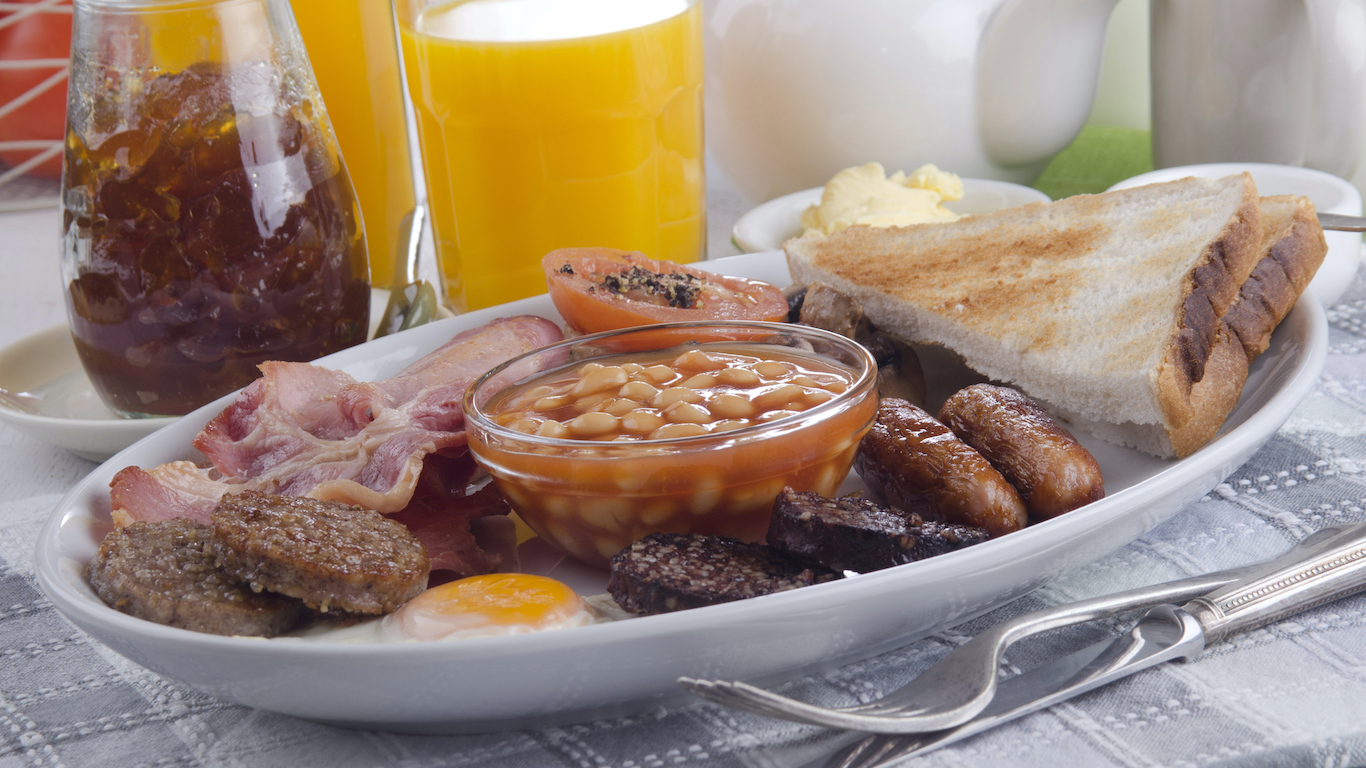
Published:

Like most countries around the world, America is full of Irish pubs, and in addition to beer and whiskey and the like, they tend to serve what most of us think of as Irish food — fish and chips, Irish stew, corned beef and cabbage, sausage and mashed potatoes. All those foods are indeed enjoyed in Ireland, but they’re only part of the story.
People are sometimes surprised to learn that Ireland even has a cuisine. Certainly, its food has been often maligned. A seven-course Irish dinner, according to an old joke, was a potato and a six-pack of Guinness. The comedian Milton Berle once maintained that “Irish Gourmet Cooking” was one of the four shortest books in the world.
On a more serious note, the most immediate association many of us have between food and Ireland is the very lack of food — the catastrophic “potato famine” of the mid-19th century that killed 1 million of the island’s residents, and sent 1 million more on a diaspora around the world (and especially to the United States).
Today, the picture is much happier. The quality of Irish raw materials is widely recognized. (As one example, Ireland’s Kerrygold butter is the second most popular butter brand in the U.S. today, found in supermarkets across the nation.) In addition, the country boasts 15 Michelin-starred restaurants, and Tourism Ireland quite rightly celebrates the island’s food and drink as a major draw for visitors — part of what makes Ireland one of the most tourist-friendly countries in the world.
This time of year, with St. Patrick’s Day almost upon us, Irish eating and drinking come to the fore in America — even if that sometimes means consuming such nonsense as green bagels and green beer at some of the best St. Patrick’s Day events in the country.
Click here to see 20 Irish foods explained
In honor of the forthcoming holiday, and in recognition of the quality of Irish food any time of year, 24/7 Tempo has assembled a list of culinary terms from Ireland, a few of them familiar but others not. Here, then, are 20 Irish foods explained.
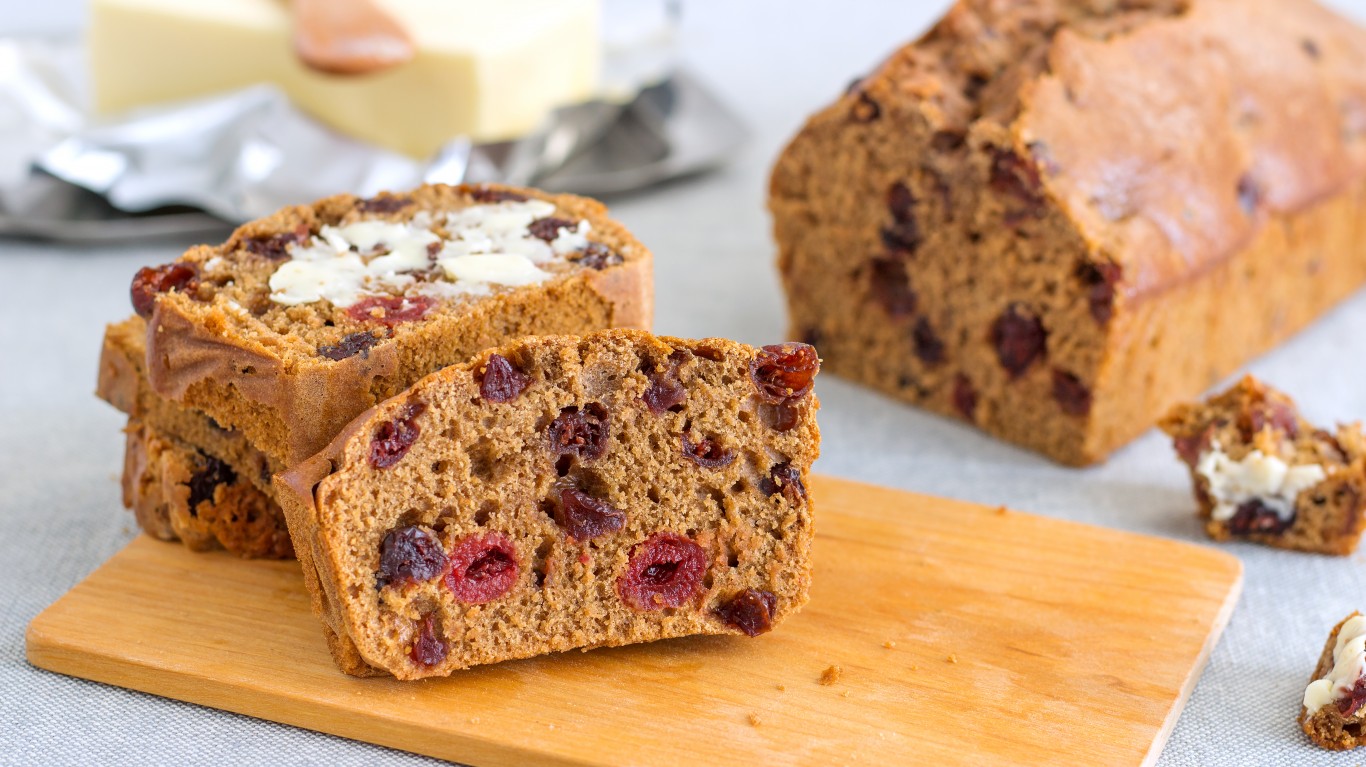
1. Barm brack
Also called barmbrack, barn brack, and (in Irish), bairin breac, this is a sweet Irish tea bread, filled with dried currants, golden raisins, and candied citrus peel. Though eaten year round, it’s especially traditional at Halloween, when a token supposedly predicting the future of the person whose slice contains it may be baked in (a ring suggesting imminent marriage, a coin symbolizing coming wealth, etc.).
[in-text-ad]
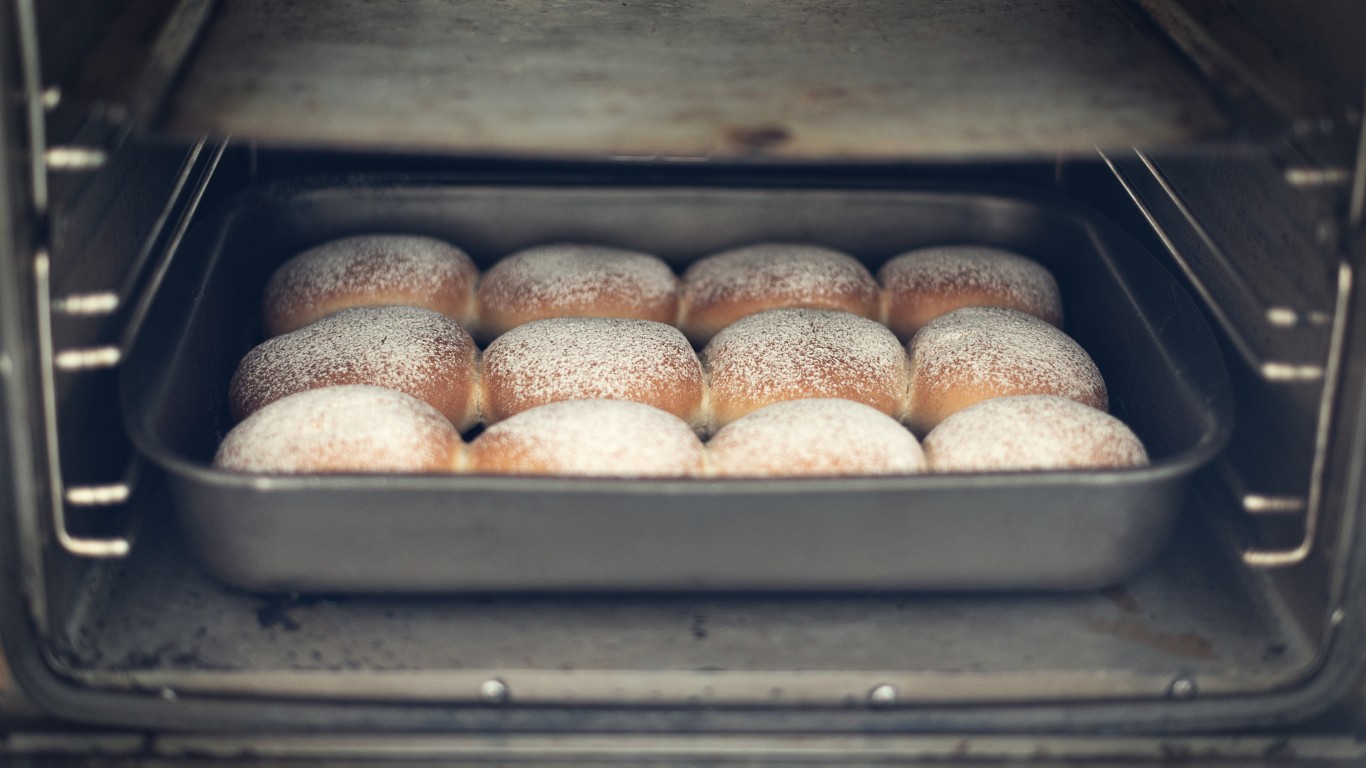
2. Blaa
A flour-dusted yeast roll that’s a specialty of the southeastern Irish city of Waterford. It is said to be a variation on the bread made by French Huguenot refugees when they came to Ireland in the 17th century.
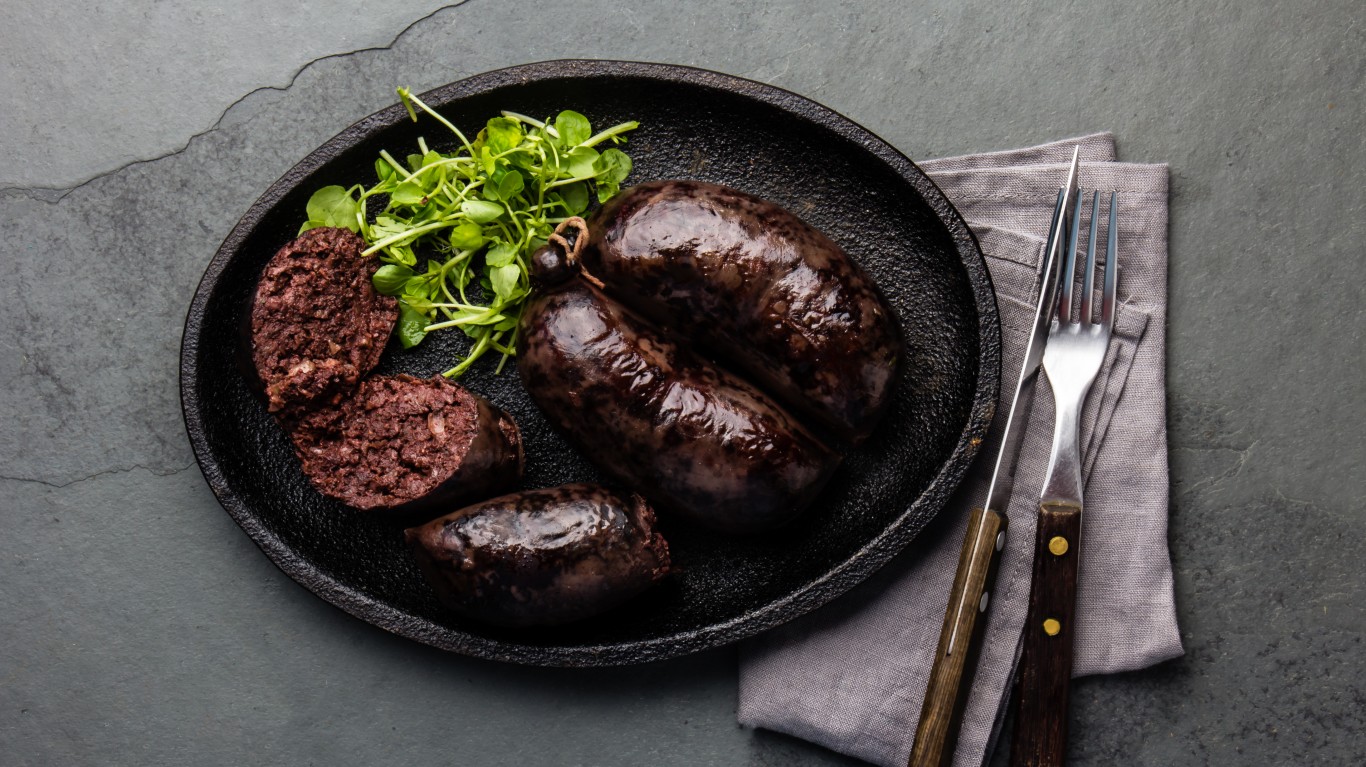
3. Black Pudding
Otherwise known as blood sausage, this is a dark, peppery mixture of ground pork, pork fat, and oatmeal. It is an essential part of the full Irish breakfast (see No. 16), and may also be involved in the Ulster fry (see No. 19).

4. Bacon and cabbage
This is the meat-and-cabbage dish eaten all over Ireland today, while corned beef and cabbage — which is authentically Irish, despite what many sources say (see No. 11) — has largely been forgotten. The “bacon” involved isn’t American bacon, or even Irish back bacon: In this context, it refers to cured pork loin or shoulder. As with corned beef and cabbage, the meat is long-simmered and combined with boiled cabbage.
[in-text-ad-2]
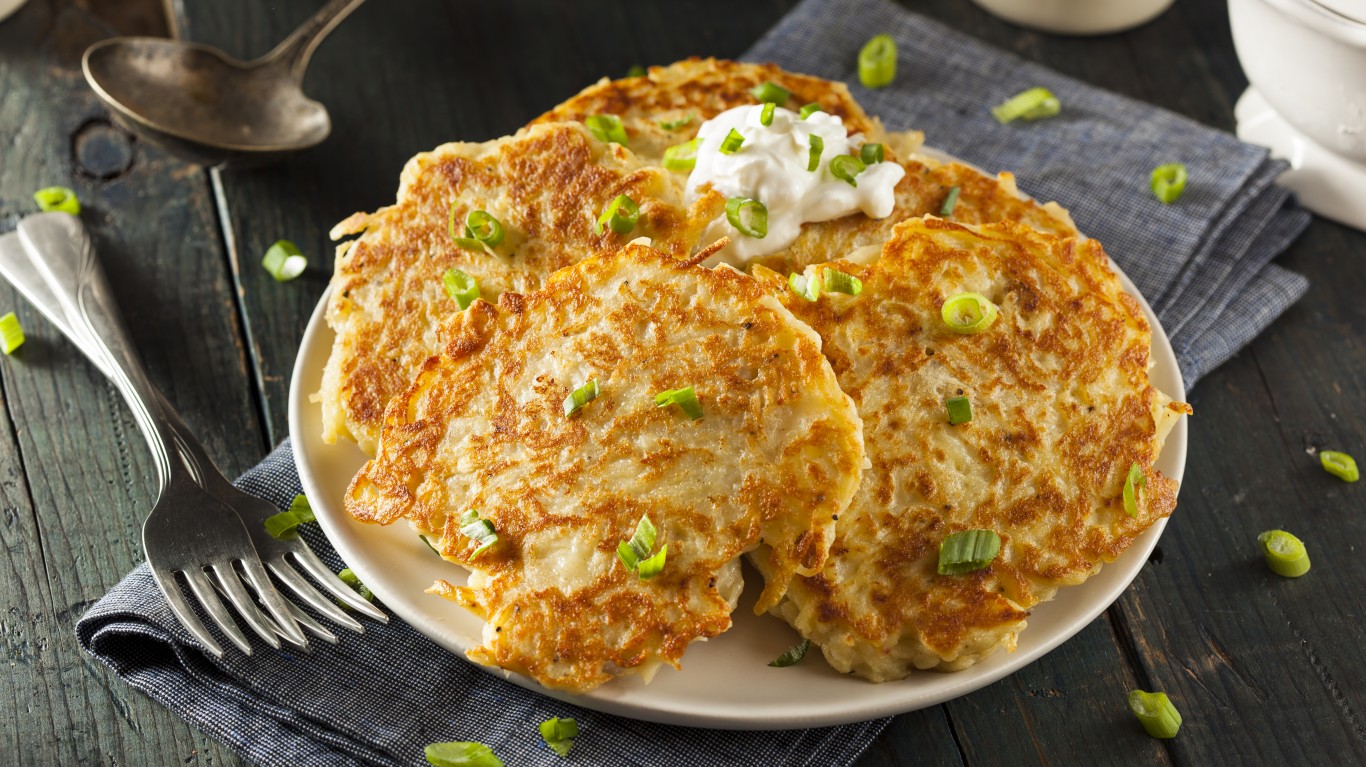
5. Boxty
A kind of potato cake, especially popular in the counties of Cavan, Fermanagh, Derry, and Tyrone (the latter three in Northern Ireland). It was once considered such an essential part of the Irish diet that an old verse went “Boxty on the griddle / Boxty in the pan, / If you can’t make boxty, / You’ll never get a man.” Made by combining grated raw potatoes or a mixture of grated raw and cooked mashed with flour and baking soda, it can be fried in the form of a potato cake or large croquette, but more often resembles a thick pancake. In pancake form, boxty can be folded over various meats, cheeses, or other ingredients.
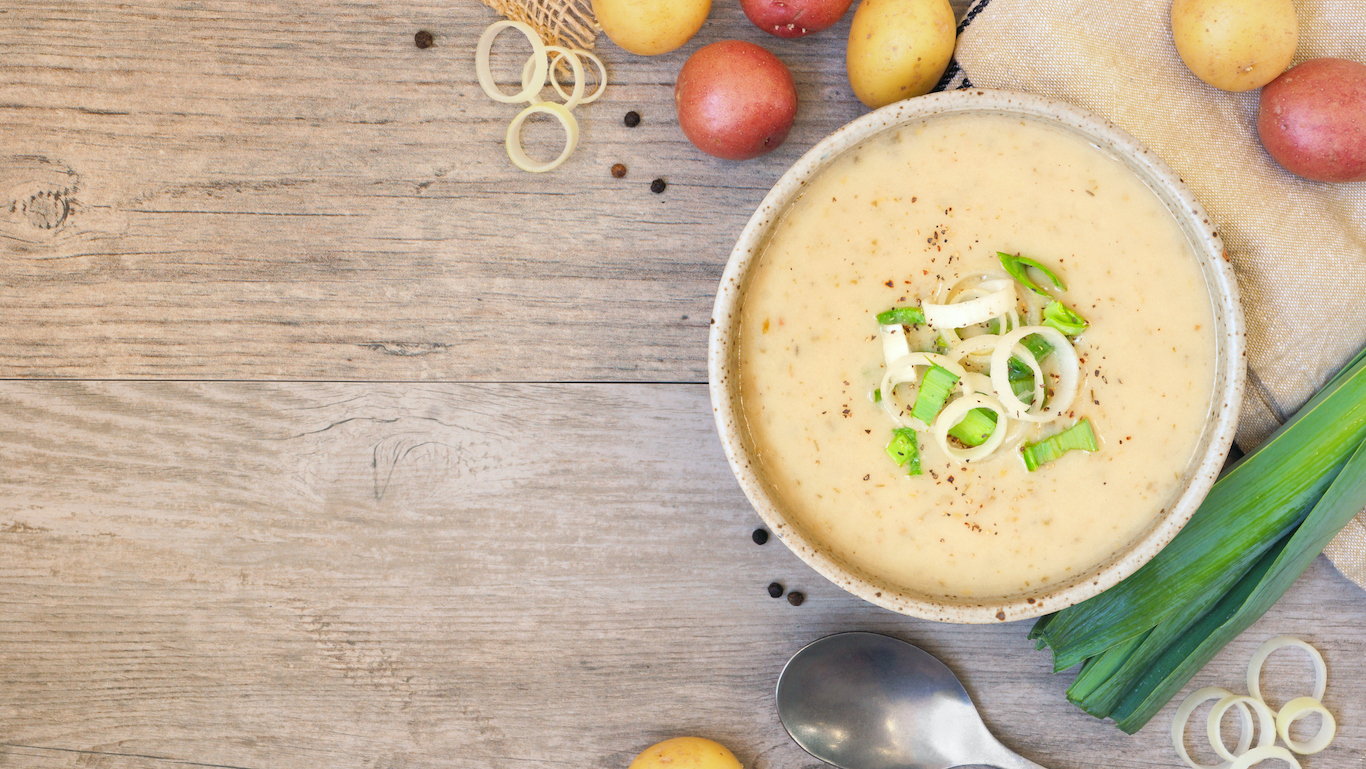
6. Brotchán Foltchep
An early Irish recipe — said to have been a favorite of the Irish apostle to Scotland and the north of England, St. Columbkille or Columkille (521-597 A.D.) — combining oatmeal with leeks cooked in butter, along with milk and chicken stock.
[in-text-ad]

7. Carrageen pudding
A substance called carrageenan (or carrageenan gum) has long been used by the commercial food industry as an emulsifier, thickener, and stabilizer, and is one of the ingredients that figures in the culinary trickery of so-called molecular gastronomy. Carrageen, from which the substance is derived, is centuries-old news to the Irish, though. A kind of seaweed, also known as Irish moss, it has been employed for both medicinal and culinary purposes on the Emerald Isle for centuries. One thing it’s used for is to gel desserts, like the carrageen pudding that’s been served at the acclaimed Ballymaloe House hotel and restaurant since the 1970s.

8. Champ
Champ is a relative of colcannon (see No. 10). While the latter specialty is mashed potatoes with kale, champ leaves out that leafy green and substitutes scallions or leeks, chives, garlic, parsley, and even sometimes nettles). As with colcannon, milk and butter are definitely involved as well.

9. Coddle
Also known as Dublin coddle, this is a home-style dish, combining leftover bacon and sausage with onions and potatoes in a kind of stew. Some recipes include barley and carrots. Irish housewives used to prepare coddle during the day and leave it on the stove for their husbands when they came home from a night of drinking at the pub.
[in-text-ad-2]
10. Colcannon
Aside from simple boiled potatoes eaten with nothing but salt, colcannon is probably the most famous and popular Irish potato dish. It’s simply spuds mashed with kale, milk or cream, and plenty of butter. It’s so well-loved that there’s even a poem about it, probably from the 19th century, that begins “Did you ever eat colcannon ’twas made with yellow cream / And the kale and pratties [potatoes] blended like a picture in a dream?”
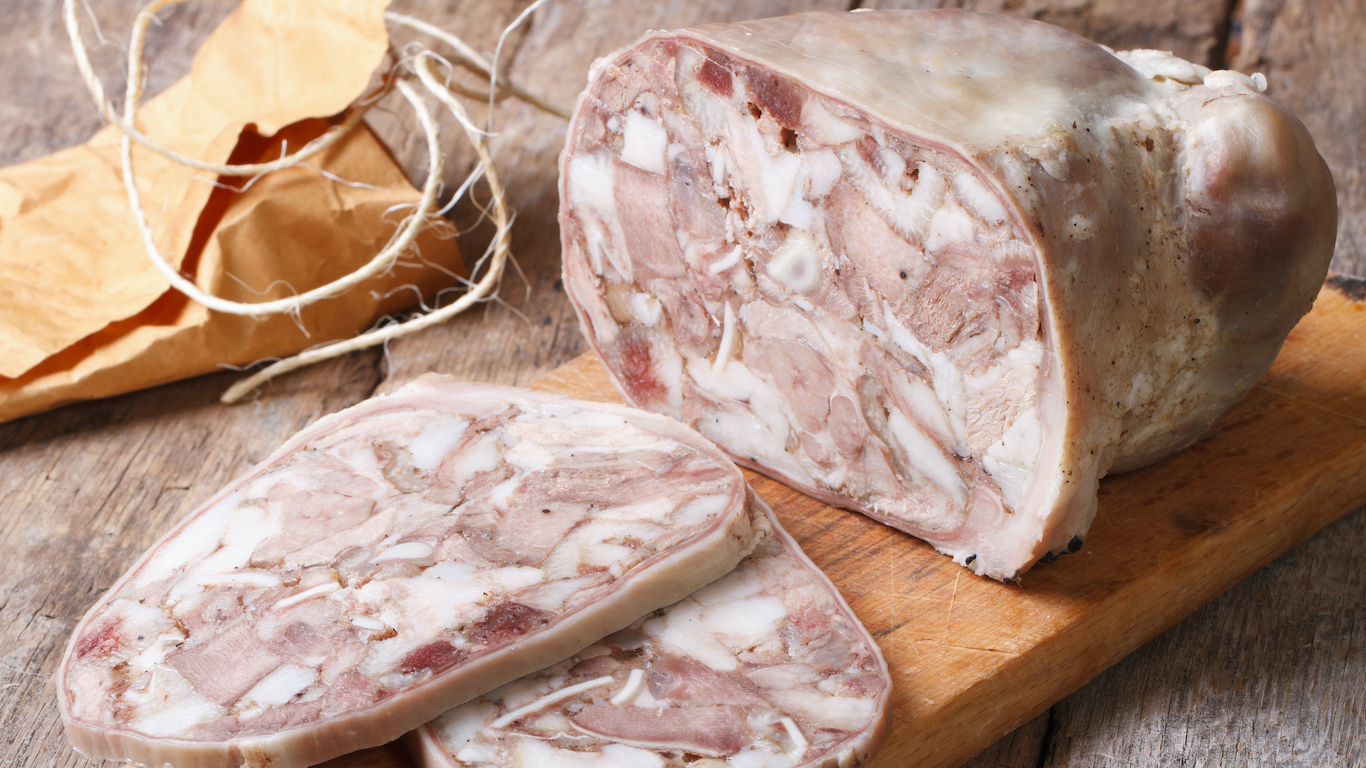
11. Collared head
This is a colorful name for head cheese, also called brawn. It’s a kind of terrine made with bits of meat from a brined pig’s head, sometimes with bits of pigs’ feet or other meats added. The natural gelatin from the meat holds the terrine together. An old-fashioned dish, it was seldom encountered until recent years, when it has made something of a comeback, especially in restaurants and food shops specializing in traditional Irish fare.
[in-text-ad]

12. Corned Beef and Cabbage
Corned beef (brisket preserved by heavy salting) long-simmered with cabbage is, along with Irish stew, probably the most famous of all Irish dishes in the U.S. It’s common to read, though, that it isn’t really Irish at all, but an Irish-American invention. Not so. According to Darina Allen — who runs the highly respected Ballymaloe Cookery School in County Cork and is considered one of the leading experts on Irish cuisine — corned beef was once extremely well-liked in Ireland, even though its popularity subsequently waned. Before the advent of refrigeration, the meat would be salted when cattle were slaughtered in the fall, then eaten with spring cabbage on Easter Sunday to break the Lenten fast.
13. Crubeens
These are pigs’ feet (or pigs’ trotters), once widely popular in Ireland as bar food and street snacks, usually long-cooked into gelatinous tenderness — though full of tiny bones — and then coated in breadcrumbs and fried. Like collared head (see No. 11), pigs’ feet fell out of fashion over the past century, but in recent years have made a comeback, and now appear even on fancy restaurant menus in Ireland — sometimes boned out to make them easier to eat.

14. Drisheen
Definitely an acquired taste — and usually acquired only by offal-lovers in its home town of Cork (though it has some fans in Limerick and Kerry, too) — drisheen is another form of black pudding. In this case, though, there’s no meat involved, just congealed pig’s or sheep’s blood with milk and seasonings. A writer in the Irish Times described its texture last year as “almost disturbingly smooth, like raw liver, except that it cuts as easily as jelly.” In Cork it is often cooked with tripe, for a dish called packet and tripe.
[in-text-ad-2]
15. Dulse
Also called dillisk, dulse is a kind of seaweed, eaten as a snack, put into sandwiches, or used as a seasoning or flavoring for dressings and other foods. The practice of harvesting it from rocks at low tide, called “dulsing,” is said to date back 1,400 years.
16. Full Irish
Some version of this gloriously unhealthy breakfast combo plate is also eaten in England, Scotland, and Wales, and Northern Ireland has its own variation (see No. 19). The exact composition of the meal varies somewhat, but it will always include a number of the following elements: eggs, back bacon, sausage, black and/or white pudding (see Nos. 3 and 20), baked beans, mushrooms, and grilled tomatoes, with toast or soda bread (see No. 17) on the side. Potatoes in some form are also sometimes on the plate.
[in-text-ad]
17. Soda bread
Real Irish soda bread isn’t the raisin-studded sweet loaf we know by that name in America. That’s more like what the Irish call “spotted dog” (the raisins are the spots), and is related to barm brack (see No. 1). Soda bread is simply bread that is leavened by the reaction between baking soda and buttermilk rather than with yeast. The traditional loaf is round, with a cross scored into the top. Legend has it that the cuts made in the dough before it’s baked are to let the fairies escape. A more practical reason might be that the scoring makes it easy to divide the loaf into four servings.
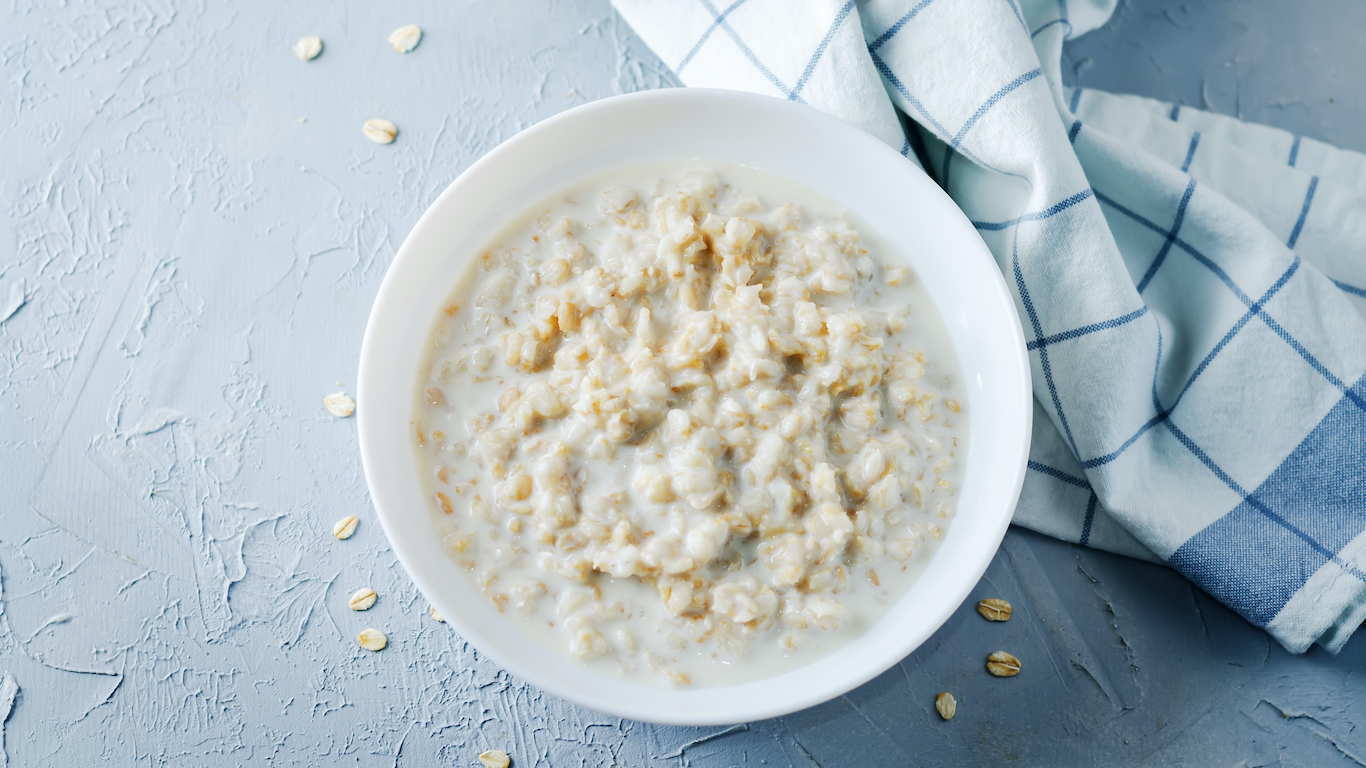
18. Stirabout
An evocative Irish name for porridge, or oatmeal — which has been eaten in Ireland at least since the 5th century A.D. Purists eat it without sugar, adding only salt and butter or cream. An old folk saying in Northern Ireland holds that stirring porridge counterclockwise will summon up the devil.

19. Ulster Fry
Ulster Fry is the Northern Ireland version of the “full Irish” breakfast (see No. 16). In addition to the usual eggs, bacon, sausage, and often black and/or white pudding, a full-scale Ulster Fry might also include a wedge of fadge (a potato cake like boxty; see No. 5) and a soda farl (a kind of baking-soda-leavened griddled bread).
[in-text-ad-2]
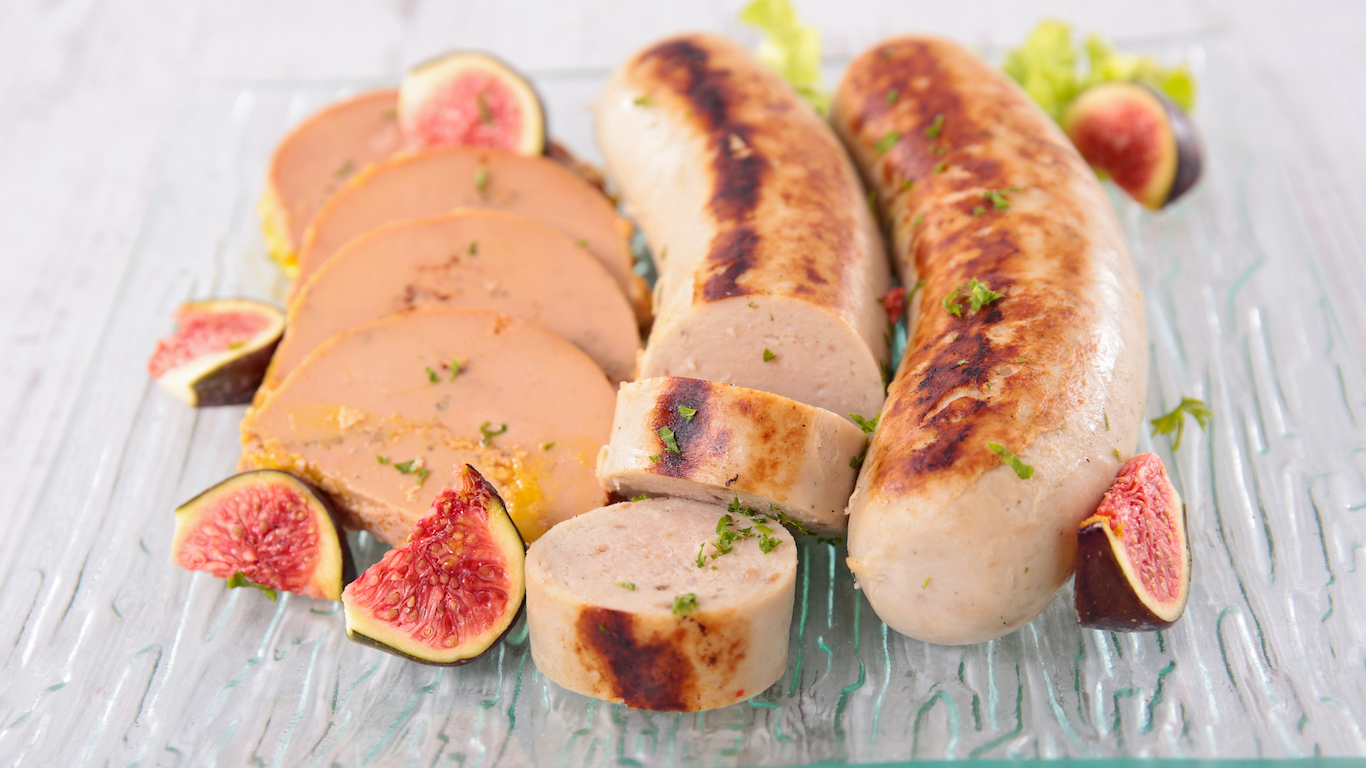
20. White pudding
Made from pork, oatmeal, and spices, white pudding is very similar to black pudding (see No. 2) — but without the blood. Like black pudding, it is considered an essential element of the full Irish breakfast (see No. 16) and is often part of the Ulster Fry (see No. 19).
The thought of burdening your family with a financial disaster is most Americans’ nightmare. However, recent studies show that over 100 million Americans still don’t have proper life insurance in the event they pass away.
Life insurance can bring peace of mind – ensuring your loved ones are safeguarded against unforeseen expenses and debts. With premiums often lower than expected and a variety of plans tailored to different life stages and health conditions, securing a policy is more accessible than ever.
A quick, no-obligation quote can provide valuable insight into what’s available and what might best suit your family’s needs. Life insurance is a simple step you can take today to help secure peace of mind for your loved ones tomorrow.
Click here to learn how to get a quote in just a few minutes.
Thank you for reading! Have some feedback for us?
Contact the 24/7 Wall St. editorial team.